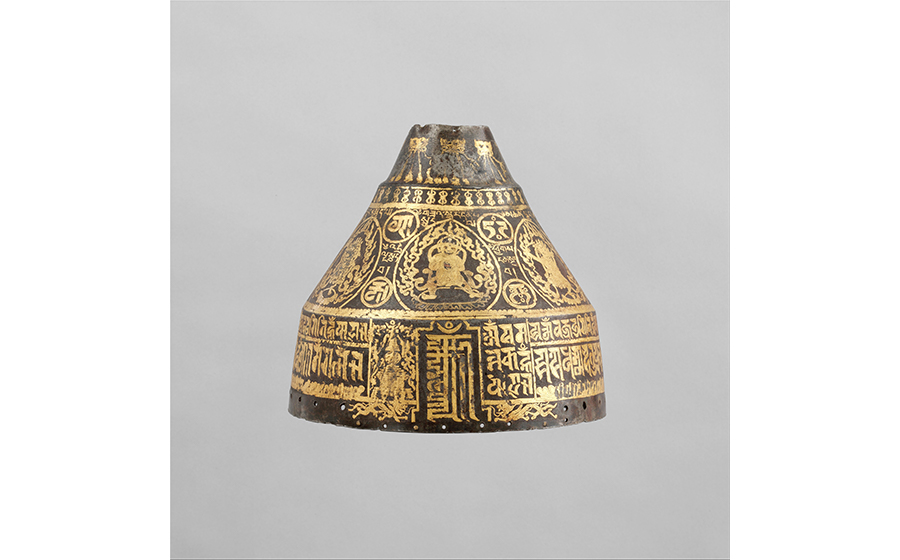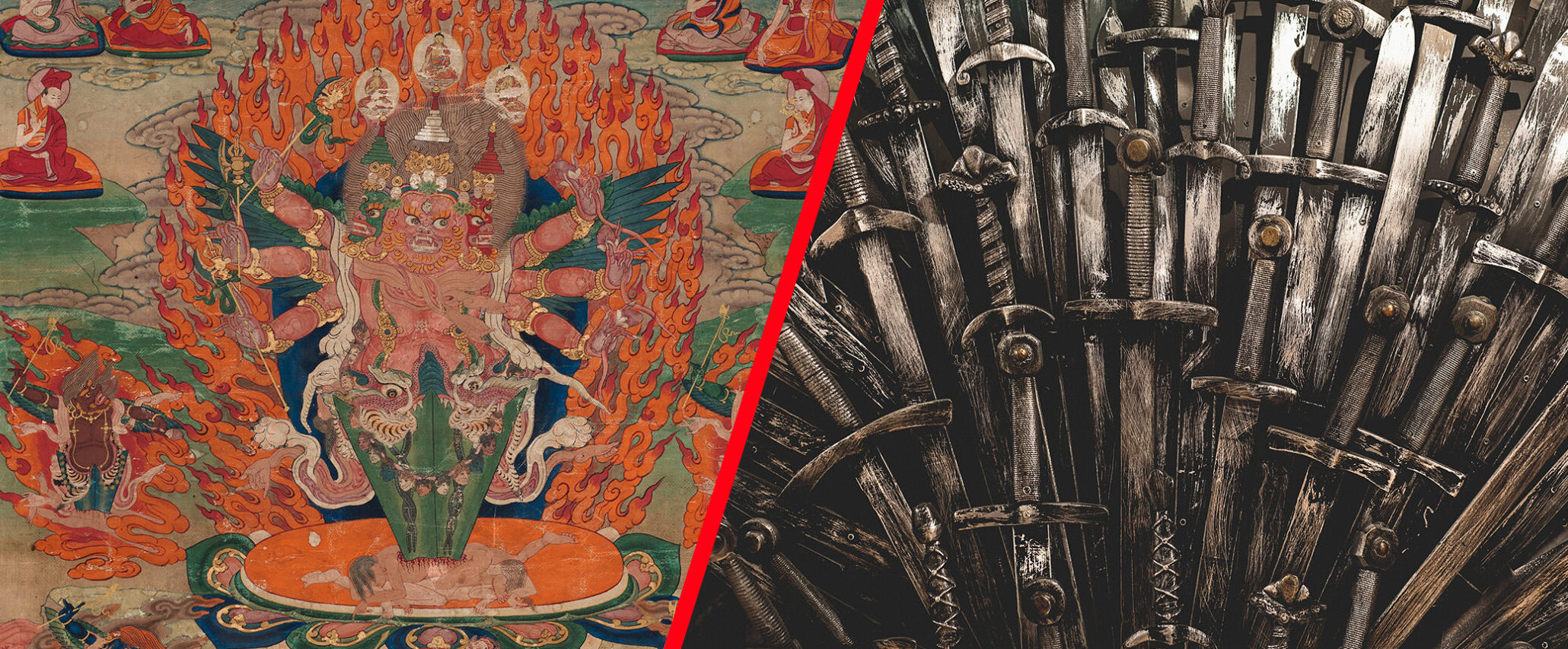
Magic and the games of power in Westeros, the Himalayas, and beyond
This post is part of a four-part series exploring the connections between Game of Thrones and the dynamics of power in the world of Tibetan Buddhism. Warning: spoilers from seasons one through seven lie ahead.
Magical power continues to inspire fascination in today’s world, if not in actual practice, then in popular fictional works like the television show Game of Thrones, which is based on George R. R. Martin’s A Song of Ice and Fire novels. Magic has also played a role in shaping real-life history. The exhibition Faith and Empire: Art and Politics in Tibetan Buddhism reveals how rulers in Central and East Asia used magical practices from Tibetan Buddhism to gain influence in their own games of thrones.
But what is magic? How do we distinguish it from religion””or science? And how is it wielded to shape power and politics? These questions lie at the heart of not only Game of Thrones but also the stories of rulers, lamas, armies, and deities from the seventh to the nineteenth century, the period covered by Faith and Empire.
What Is Magic?
In The Golden Bough (1890), comparative mythologist James Frazer defined magic as the use of one’s own power to control impersonal spiritual forces, in contrast to religion which seeks the favor of supernatural beings. Others consider magic to be a secret ritual enacted by individuals for tangible gain, as opposed to religion, which they view as communal and in pursuit of higher goals like salvation. It is not always easy to make such distinctions. Consider the example of Catholic sacraments, which depend on human action and divine power.
Magic and science can similarly blur. As the science fiction writer Arthur C. Clarke once said, “Any sufficiently advanced technology is indistinguishable from magic.” Colonialist attitudes have often led Westerners to deem aspects of non-Western thought “magical” and therefore “primitive,” yet elements of magic have persisted even in the supposedly disenchanted Western world.
Sorcery Meets the Iron Throne
The story of Game of Thrones relies on magic, but its world initially appears devoid of such influence, and supernatural forces only gradually become known. Initially, the Starks, Lannisters, and other noble houses vie for power in Westeros through alliances and the sword. Certain claimants to the Iron Throne turn to magic to gain a secret edge, relying on initiates into a magical tradition or their own powers, whether life-giving or deadly.
Melisandre, a Red Priestess of the religion of the Lord of Light, has mastered many magical techniques, which she uses on behalf of Stannis’s and Jon Snow’s bids for power. She can see prophetic visions in fire, conduct rituals of power and violence using king’s blood, and even resurrect the dead.
Sorceresses and warlocks of different traditions aid and imperil the Dragon Queen Daenerys on her quest to reclaim the throne, but ultimately her own miraculous powers to control dragons surpasses all. The reappearance of her dragons brings about the revival of magic in the world.
Magic is also a dangerous force, as shown by the White Walkers. Created by the Children of the Forest, the White Walkers escaped their control and now menace all life on earth.
Tantric Wizardry on the Battlefield
Tantric practices in Tibetan Buddhism blur the lines between religion and magic, combining ritual techniques and deity worship, collective and individual practice, and worldly and transcendent goals. Since the inception of Tantric Buddhism in seventh-century India and its transmission to Tibet the following century, practitioners have seen tantric forms of Buddhism as a swift means to mental awakening as well as a source of magical practices to defeat enemies, both spiritual and physical.
One skilled in tantric magic could accomplish four aims: pacification, of things like disease; augmentation of long life or other desired qualities; control or power; and ferocity, including violence and killing. Tibetan Buddhism derived its renown among empires from war magic, with Tibetan lamas winning the favor of emperors by enacting rituals to win battles. Tanguts and Mongols saw the Tibetan deity Mahakala as key to victory, and the deity made appearances on the battlefield as a sign of their triumph.
Rulers also used magic to resist and protect against power, as well as turn back enemy armies. A fifteenth- to seventeenth-century Mongolian battle helmet, on loan to Faith and Empire from the Metropolitan Museum of Art, is covered by protective talismans, showing the common use of magic as a means of defense. The story of Milarepa shows the dark side of the supernatural; he practiced black magic for the sake of revenge and incurred negative karma. He then repented and became a great yogi who is still revered today.

Martin took inspiration for his stories from Western history and lore, but rulers across cultures have sought magical sources to bolster their power. The supernatural means the characters of Westeros use to claim the Iron Throne have uncanny parallels with the war magic that unites faith and empire in the Himalayas.
Take a special Game of Thrones tour of the Rubin Museum and learn more in the exhibition Faith and Empire: Art and Politics in Tibetan Buddhism, on view February 1-July 15, 2019.
About the Contributor
William Dewey is a curatorial fellow at the Rubin Museum. He recently completed a PhD in Tibetan Buddhism from the University of California, Santa Barbara, and spent a year teaching at the Rangjung Yeshe Institute in Kathmandu.


